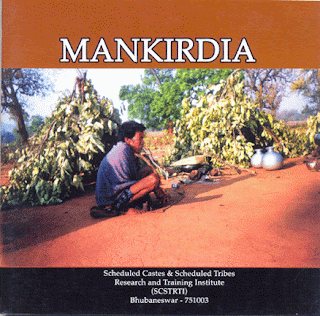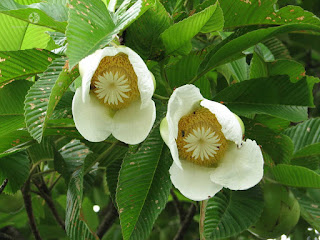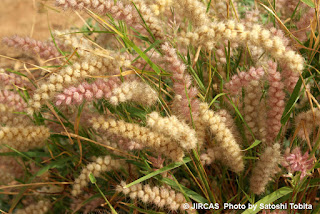Sanjeet Kumar
sanjeet.biotech@gmail.com
| Linaceae |
Kingdom: Plantae
Division: Magnoliophyta
Class: Magnoliopsida
Order Type: Eudicots-Rosids I
Order: Malpighiales
Family: Linaceae
|
The Linaceae is a family of flowering plants and known as European Common Flax family . The family is cosmopolita and includes approximately 250 species. There are 14 generas, classified into two subfamilies: Linoideae and Hugonioideae. In Linoideae, the largest genus is Linum, The largest genus of Hugonioideae is Hugonia. Linoideae and Hugonioideae can be differentiated by the number of fertile stamens (5 in Linoideae, 10 in Hugonioideae) and fruit type (capsules in Linoideae, fleshy drupe-like fruits in Hugonioideae). Under the old Cronquist system of classifying the flowering plants, the Linaceae was placed in its own order Linales. Modern classifications place it in the order Malpighiales.
Genera in subfamily Linoideae
- Anisadenia
- Cliococca
- Hesperolinon
- Linum
- Radiola
- Reinwardtia
- Sclerolinon
- Tirpitzia
Genera in subfamily Hugonioideae
- Durandea
- Hebepetalum
- Hugonia
- Durandea
- Philbornea
- Roucheria
Botany
They are herbs and shrubs (mostly), or trees (a few); non-laticiferous and without coloured juice. ‘Normal’ plants. Mesophytic, or xerophytic. Leaves alternate to opposite; usually spiral; sessile; non-sheathing; simple. Lamina entire. Leaves stipulate, or exstipulate. Stipules small, sometimes represented by glands; caducous. Lamina margins entire. Leaves without a persistent basal meristem.
Leaf anatomy: Mucilaginous epidermis present, or absent. Stomata present; commonly paracytic.
Stem anatomy: The cortex containing cristarque cells, or without cristarque cells. Nodes tri-lacunar. Secondary thickening developing from a conventional cambial ring. Xylem with tracheids; with fibre tracheids, or without fibre tracheids; with vessels. Vessel end-walls simple. Vessels without vestured pits. Wood parenchyma apotracheal, or paratracheal, or apotracheal and paratracheal (often difficult to classify).
Reproductive type, pollination: Fertile flowers hermaphrodite. Plants hermaphrodite.
Inflorescence, floral, fruit and seed morphology: Flowers aggregated in ‘inflorescences’; in cymes. The ultimate inflorescence unit cymose. Inflorescences cincinni or dichasia, sometimes pseudoracemose. Flowers regular; usually 5 merous; cyclic. Free hypanthium absent. Hypogynous disk present (outside the androecium); extrastaminal; of separate members, or annular. Perianth with distinct calyx and corolla; 10; 2 whorled; isomerous. Calyx 5; 1 whorled; polysepalous, or gamosepalous (sometimes basally connate). Calyx lobes markedly longer than the tube. Calyx persistent; imbricate (quincuncial); with the median member posterior. Corolla 5; 1 whorled; polypetalous, or gamopetalous; imbricate, or contorted; regular. Petals clawed (often), or sessile. Androecium 5, or 10, or 15 (rarely). Androecial members free of the perianth; all equal, or markedly unequal; coherent (basally, into a ring); 1 adelphous. Androecium exclusively of fertile stamens, or including staminodes (often). Staminodes sometimes 5 (alternating with the fertile stamens); in the same series as the fertile stamens, or internal to the fertile stamens (?). Stamens 5, or 10, or 15; isomerous with the perianth, or diplostemonous to triplostemonous; alternisepalous, or oppositisepalous (mostly). Anthers dehiscing via longitudinal slits; introrse; tetrasporangiate. Endothecium developing fibrous thickenings. Microsporogenesis simultaneous. The initial microspore tetrads tetrahedral. Anther wall initially with one middle layer, or initially with more than one middle layer; of the ‘monocot’ type. Tapetum glandular. Pollen grains aperturate, or nonaperturate (e.g. Reinwardtia); 3 aperturate, or 4–20 aperturate (?); colpate, or porate, or rugate (rarely), or colporate (variously tricolpate or colporate, polycolpate, or multiporate); 3-celled. Gynoecium 2–3–5 carpelled. The pistil 2–10 celled. Gynoecium syncarpous; synovarious to synstylovarious; superior. Ovary 1 locular (apically only, when the placentas fall short), or 2–3–5 locular (but sometimes exhibiting extra projections from the carpel midribs which, however, do not reach the central column). Locules partially secondarily divided by ‘false septa’, or without ‘false septa’. Gynoecium stylate. Styles 1, or 3–5; free to partially joined; apical. Stigmas dry type; papillate; Group II type. Placentation axile. Ovules 2 per locule; pendulous; epitropous (Engler); non-arillate; anatropous; bitegmic; tenuinucellate, or crassinucellate. Outer integument not contributing to the micropyle. Endothelium differentiated. Embryo-sac development Polygonum-type. Polar nuclei fusing prior to fertilization. Antipodal cells formed, or not formed (the three nuclei remaining naked in Linum); 3; not proliferating; ephemeral. Synergids hooked (sometimes with filiform apparatus). Endosperm formation nuclear, or helobial. Endosperm haustoria present; chalazal. Embryogeny solanad. Fruit fleshy, or non-fleshy; dehiscent, or indehiscent, or a schizocarp. Mericarps when schizocarpic, 2 (in Anisadenia); one-seeded. Fruit when non-schizocarpic a capsule, or a drupe, or a nut. Capsules septicidal. Seeds endospermic, or non-endospermic; with amyloid, or without amyloid. Cotyledons 2; flat. Embryo chlorophyllous (11 species of Linum); straight.
Uses
The European Common Flax has been used by humans for thousands of years. It's long fibers are used to make linen, the oldest known textile. The fibers are used also for nets and ropes, and the seeds are pressed to obtain linseed oil which is used in paint, ink and varnish. The left over seed husks and fiber-less plant material is used for cattle feed. It's latin name, Linum usitatissium, means "of maximum usefulness". Most important as the source of flax fiber used in cigarette paper, fine writing paper and linen cloth. Also the source of linseed oil. Some species are cultivated as garden ornamentals.


















